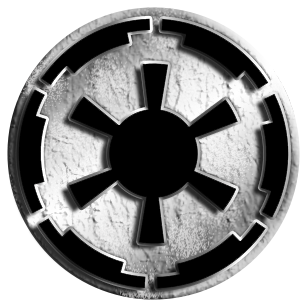

Heavy turbolasers are main Imperial anti-capital ship weapon. ISD carries these in turrets on each side of the ship.
In the novelization of Revenge of the Sith, our introduction to the story comes with the following:
" The skies of Coruscant blaze with war.
The artificial daylight spread by the capital's orbital mirrors is sliced by intersecting flames of ion drives and punctuated by starburst explosions; contrails of debris raining into the atmosphere become tangled ribbons of cloud. The nightside sky is an infinite lattice of shining hairlines that interlock planetoids and track erratic spirals of glowing gnats. Beings watching from rooftops of Coruscant's endless cityscape can find it beautiful.
From the inside, it's different. The gnats are drive-glows of starfighters. The shining hairlines are light-scatter from turbolaser bolts powerful enough to vaporize a small town. The planetoids are capital ships."
So, we have basis to calculate HTL firepower. But first, we must define what vaporization means and find suitable town.
"To vaporize", in context, probably means "to destroy so no standing buildings remain", such as seen here:

Next, we have to find suitable "small town" to vaporize it.
On "Town" page in Wikipedia, we have several towns, with Bastrop being "small town".
Bastrop has area of 18.9 km^2.
I will use this calculator, and take 15 psi overpressure. That gives us 1 megaton.
This calculator shows that 1.4 megaton Mk28 bomb is best choice to destroy it.
CONCLUSION: Heavy turbolasers are ~1.5 megatons, +- 0.1 Mt. However, as it is prequels era, and smaller ships, Imperial HTL might be in 2 - 5 Mt/shot range.
(NOTE: It also shows that, in direct contradiction to EU, turbolaser bolts carry the firepower; there are no "invisible FTL beams" EU apologectics claim so as to "explain" EU insane combat range, which, by the way, is contradicted by canon itself; and also mentiones fighters damaging armor of cruisers).
Effective turbolaser range is dictated by many variables: speed of bolt, quality of targeting systems, speed of target, size of target. However, I will try to make some guesses.
ROTJ novel - according to RotJ novel, Rebel cruiser "Liberty" was fighting in a "furious long-range battle" moments before its destruction. Also, while we see Imperial fleet at some distance during "fighter coming in" moment, it means that it was near maximum range. On first-wiew eyeball estimate, Rebel fleet is at most 5 Executor's lengths away from Imperial fleet, around 95 kilometers.

By using screenshots above, we can calculate distance between Millenium Falcon and Imperial fleet. From here we can see that length/width ratio for Executor is 2.94 : 1. With length of 19 kilometers, width works out as 6 470 meters. Its width is 36.2% of width of screen, or, at 4:3, 27.15% of its height.
OD / 6470m = 35mm / 9.5mm
OD = (35 mm / 9.5 mm) x 6470 m
OD = 3.6842 x 6470 m
OD = 23 836.842 m
So we have 24 kilometers for long-range combat, as per novelization. Even assuming 1/3rd of maximum range, it is still 71.5 kilometers for capital-ship combat.
However, focal length is sometimes taken as 50 mm, so we have this situation:
OD / 6470 m = 50 mm / 9.5 mm
OD = (50 mm / 9.5 mm) x 6470 m
OD = 5.263 x 6470 m
OD = 34 052 m
Again assuming 1/3rd for maximum range, we have 102 kilometers as maximum combat range for SW ships.
ROTS novel - "The vast semisphere of the view wall bloomed with battle. Sophisticated
sensor algorithms compressed the combat that sprawled throughout the
galactic capital's orbit to a view the naked eye could enjoy: cruisers
hundreds of kilometers apart, exchanging fire at near lightspeed, appeared
to be practically hull-to-hull, joined by pulsing cables of flame."
While we see that bolts are nowhere near lightspeed, it is possible that some ships were targeting other ships hundreds of kilometers apart, althought most of combat seemed to be short-range affair, at few hundred meters range.
SPEED OF BOLT - assuming that limiting factor in RotJ battle was fear of hitting their own fighters, and that SW ships actually can hit any target that cannot move away from TL bolt, we have to find its speed.
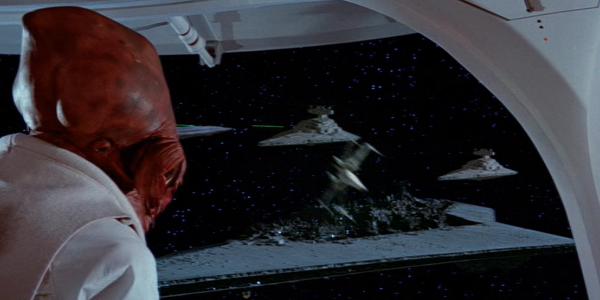
Here is screenshot giving us wiev of HTL bolt fired by ISD. It is around 800 meters long. Bolts fired in movie seem to cover at least half of its length per frame (I analyzed scene using Adobe Premiere) ad full length at most, at framerate of 25 fps. That gives us speed of 10 000 to 20 000 meters per second. Given that Rebel cruiser moved at 200 m/s at best (using length of 1400 meters for Home One) it will need almost 4 seconds to move out of way (assuming bolt is fired at center of ship), giving effective range of HTL as 40 to 80 kilometers.
CONCLUSION: Maximum effective SW ship-to-ship combat range is 100 kilometers, and several hundred kilometers (up to 1000 km) if we take novels. Effective range of planetary defences might allow up to 6 000 kilometers range; however, it is quite plausible that fixed defences have greater effective range than starships.
Some Warsies have suggested that:
a) turbolaser bolts in novelization were not from heavy turbolasers
b) novelization suggests low end for HTL firepower, not high end
c) "vaporizing small town" means vaporizing asteroid/volume of rockwith diameter similar to that of small town
We can dismiss first argument outright. If you read novelization, you will notice that:
a) bolts were barely visible, and no other bolts were mentioned beside these
b) capital ships were described looking like planetoids
c) bolts were described as "powerful enough to vaporize small town".
So, if bolts were barely visible, were still something worth mentioning, and were not surpassed by heavier bolts, it follows that bolts described are indeed largest bolts fired - ones originating from heavy turbolasers. Also, given level of light pollution on Coruscant, it is questionable that any bolts except largest ones could be visible.
Second objection is on similarly shaking ground. When you are describing firepower of any weapon, you will (naturally and logically) describe high end of what weapon in question can achieve, not low end. We know that average nuclear bomb can destroy city, and that it also can set wood on fire. Will you, when describing nuclear bomb, say that it is "capable of setting tree on fire"? No, you will describe maximum of what weapon in question can hope to achieve.
Third objection is just nonsensical. "Vaporizing town" is not same as "vaporizing asteroid". Plus "vaporization" is often not used in meaning of "sublimation", but rather "to destroy", and writer of novelization is not physics man.
In The Empire Strikes Back, we see ISD using medium turbolasers to vaporize several asteroids.
First, we need to determine size of trench. This is only side-wiev of ISD movie model I was able to find, and it gives us 16 meters for size of ISD's trench.
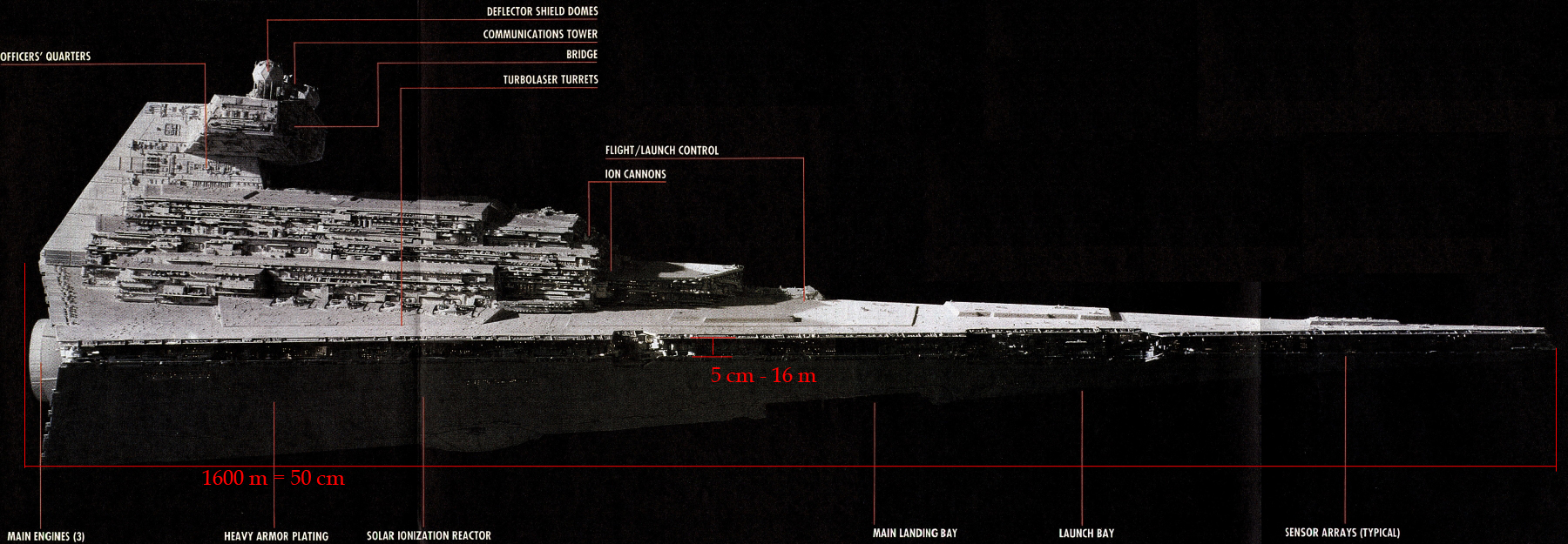
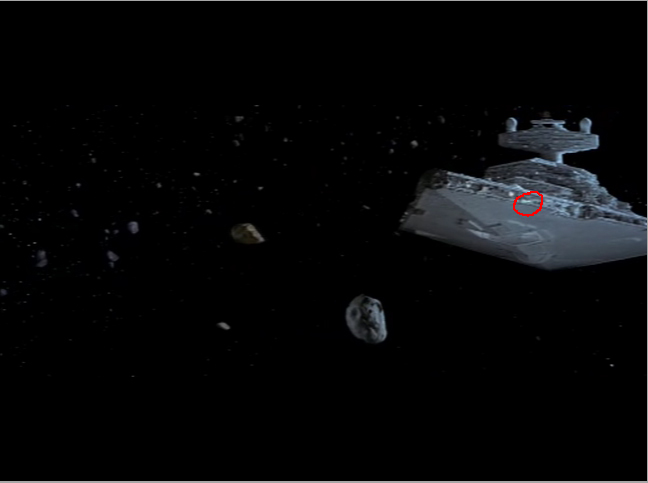
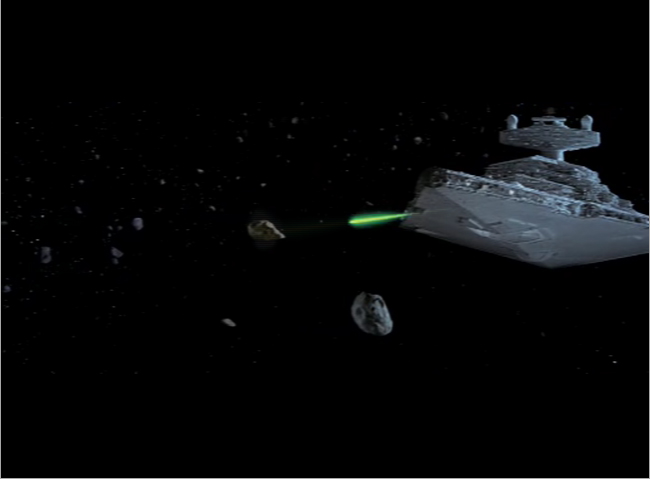
Bolt width in first picture is approx. 2 pixels, with trench being 9 pixels high. With trench height being 16 meters, we can determine bolt to be 3.56 meters wide, and asteroid 5.34 meters wide. This asteroid is brown, probably cabornaceous.
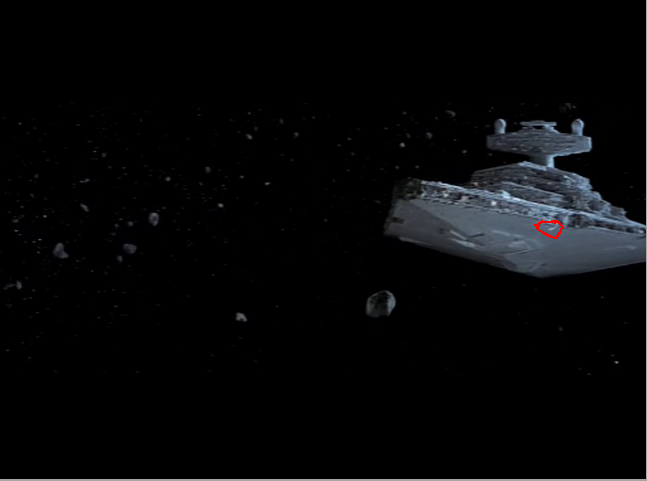
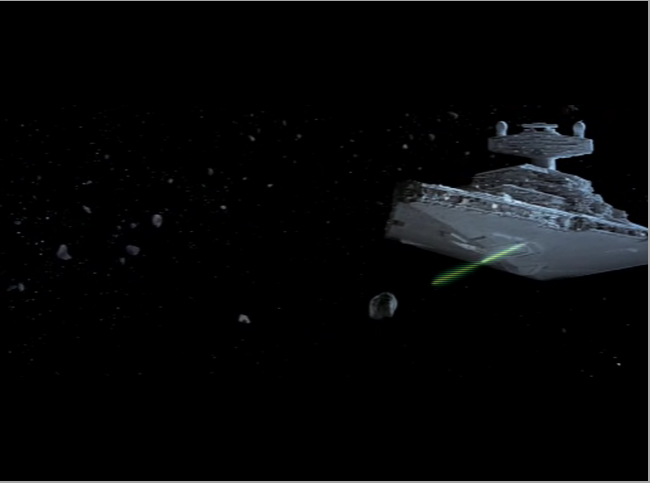
Bolt is 2 pixels wide in first picture, for total width of 3.56 meters. Asteroid is 12.46 meters in diameter. However, this asteroid is gray in color, which indicates either silicate or metallic asteroid. I will assume it is iron-nickel asteroid.
So we have volume of asteroid as being 1012 cubic meters. As with "Rise" asteroid, I will take nickel as being 15% of asteroid. So we have 860.94 cubic meters of iron, and 151.93 cubic meters of nickel.
VAPORIZING IRON
In "Photon torpedo" page I already have data I need here to calculate vaporization energy. By using that data, we need 6.47 x 10e12 + 1.68 x 10e12 + 4.74 x 10e12 + 4.13 x 10e13 J = 5.419 x 10e13 J to vaporize iron part of asteroid.
VAPORIZING NICKEL
By using same data, we see that energy required to vaporize nickel portion of asteroid (23 060 018 moles) is 1.037 x 10e12 + 4.03 x 10e11 + 8.77x10e11 + 8.7 x 10e12 J = 1.102 x 10e13 J to vaporize nickel part of asteroid.
So, medium turbolasers on ISD are 6.521 x 10e13 J or 15.59 kilotons per shot.
Presumably lower than range of heavy turbolasers.
Some have argued that turbolasers ISD used are light ones. That, however, is untrue. We can conclude that from positioning of these turbolasers on hull, which suggests they are intended for use against capital ships, size and speed of bolts (far larger and slower than light bolts), and fact that we saw both fighter-based and anti-fighter guns, which (and bolts fired) are nowhere near size of bolts fired on asteroid by ISD. (Concerning size of bolts, asteroid-destroying bolts are over 3 meters wide).
During ANH we see light turbolasers firing. From effects we can conclude these are not more powerful than few kilograms of TNT; however, we have nothing to make firm calculation in Original Trilogy, so I will only refute some claims that ISD fired light turbolasers during TESB asteroid destruction scene (analyzed above).
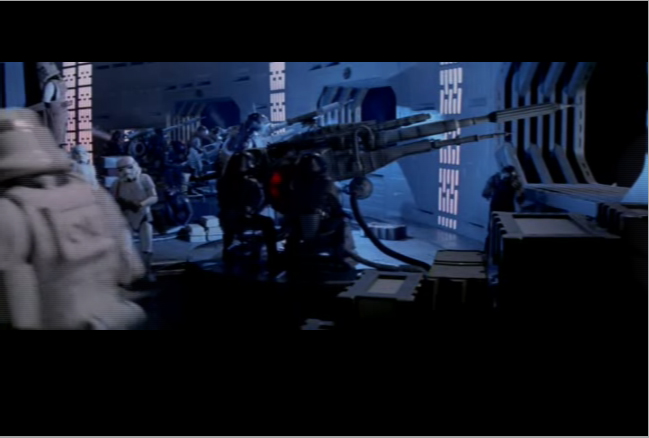
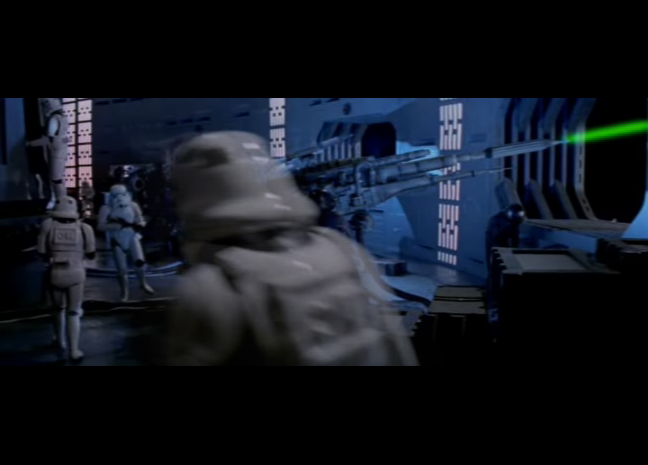
Here we see light turbolaser on Death Star. Assuming that trooper in armor is 1.9 meters high, we can conclude that wide part near end of barell is ~40 centimeters high. In shot below, we see that bolts fired by light turbolasers have same width as that part of barell. As we see in "Medium Turbolasers" part of page, shots fired during TESB (shots Warsies claim to be from light turbolasers) are 3.5 meters wide. There is simply no way TESB shots were from light turbolasers.
First we have shots by Slave I on Kamino platform. Boba fired them at full auto, firing dozen shots in one second.

From that, and using McGregor's height (5' 10.5'' or 1.79 m) we can conclude that area of effect of one shot is 80% of his height or 1.432 m in diameter, which gives us roughly few kilograms of TNT. These shots still depleted energy pacs of Slave I, according to novelization.
Here we have movie showing effects of sub-kiloton detonation.
However, doring asteroid chase scene one of bolts fired by Slave I hits asteroid, and part of asteroid is fragmented.
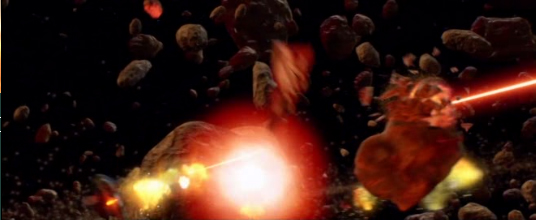
That part was, originally, around 1/5th of Slave-I's height.
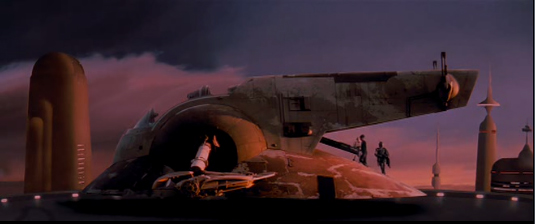
Assuming Boba Fett's height in armor as 1.9 meters, we have 19 meters as height of Slave I. That gives us 3.8 meters for diameter of destroyed part of asteroid. By using Wong's asteroid destruction calculator, we get energy required to destroy asteroid with diameter of 10 meters as 0.2 to 4.7 tons. 3.8 m diameter gives us 1/18.22423 of 10-meter asteroid's volume, for 0.01 to 0.257 tons of TNT (10 to 257 kg of TNT, or 41.84 to 1075.288 MJ per shot).
Based on my old estimate, rate of fire for heavy turbolasers is 1 shot every ten seconds for entire ISD's complement of heavy TL combined (8 double turrets, based on shot of Republic star destroyer during Battle of Coruscant), with medium TL firing 2-3 shots per second combined (from ANH Tantive chase scene). So we have total weapons output of ISD as being 11.806 megatons per minute, not counting light TL. (It might go up to 14.8 to 32.8 Mt/min).